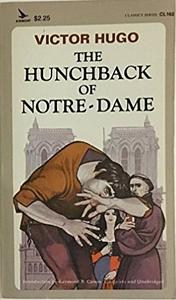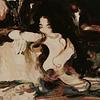You need to sign in or sign up before continuing.
Take a photo of a barcode or cover
I read the Oxford translation by Krailsheimer. The members in my book club each read different translations, so it was fun to compare how the text was interpreted. (A guide on translations https://welovetranslations.com/2022/10/18/whats-the-best-translation-of-the-hunchback-of-notre-dame-part-2). We all liked the novel much more than we expected to. For sure, it was dark, and darker than the animated Disney movie. The plot was not lovely, but that was not surprising. The characters were not particularly lovable--Quasimodo was an oafish pitiable doorknob and Esmeralda was a weak silly teenager. The Disney movie added a lot of social justice to Esmeralda's character; in the book, she's a white girl kidnapped by gypsies who's pretty and is undeservingly head over heels for a hot guy (Phoebus) who is generally just horny, wants a good time, and doesn't want strings attached. Frollo is super awful(tw: attempted rape) and completely and unapologetically messes up Esmeralda's life just bc he can't get her out of his head. Some famous lines are "If I can't have her, no one can" and "This (printing press) will kill that (architecture)." The ending is tragic, making for an excellent classic and very juicy for discussion throughout. We talked about internal vs external monsterhood; destruction, ephemerality, and preservation (particularly regarding architecture); and obsession (passive vs aggressive). This novel influenced historic architectural preservation in France, which is pretty cool. It was cool to dive into learning more about the historic context as well, what with the variation in the novel's name (initially just 'notre Dame,' then 'hunchback' only added upon the English translation, and 'Esmeralda' being its original dramatic reproduction) as well as the historic setting knowing when it was written (1800s) vs when it took place (1400s).
I gave this book five stars as I found the tantalizing glimpse into the time of the tale was exquisite. I found Victor Hugo’s lyrical and detailed prose to be a page turner, however, the depth of detail will not be for all.
challenging
informative
reflective
sad
slow-paced
Plot or Character Driven:
Plot
Strong character development:
No
Loveable characters:
No
Diverse cast of characters:
Yes
Flaws of characters a main focus:
No
slow-paced
adventurous
dark
emotional
slow-paced
medium-paced
Plot or Character Driven:
Character
Diverse cast of characters:
Yes
dark
emotional
sad
medium-paced
Plot or Character Driven:
A mix
Strong character development:
No
Loveable characters:
Complicated
Diverse cast of characters:
No
Flaws of characters a main focus:
Yes
"Non guardare la faccia,
Fanciulla, guarda il cuore."
Non so quale sia stato scritto prima, ma Hugo avrebbe potuto chiamare anche questa sua opera "I Miserabili". Dimenticatevi i vivaci colori della Disney (che comunque ha compiuto un ottimo lavoro di sartoria: un taglia e cuci della storia originale che ha prodotto un risultato magnifico!), fra queste pagine troverete solo mille e più tonalità di grigio.
Fanciulla, guarda il cuore."
Non so quale sia stato scritto prima, ma Hugo avrebbe potuto chiamare anche questa sua opera "I Miserabili". Dimenticatevi i vivaci colori della Disney (che comunque ha compiuto un ottimo lavoro di sartoria: un taglia e cuci della storia originale che ha prodotto un risultato magnifico!), fra queste pagine troverete solo mille e più tonalità di grigio.
Um it was fun but I was trying to make myself read the Powerbroker and ending up returning it to the library. I’ll probably come back for it someday…



